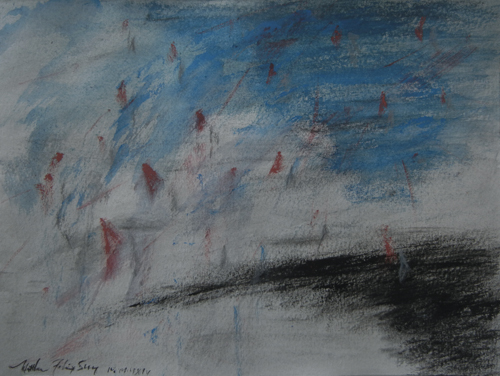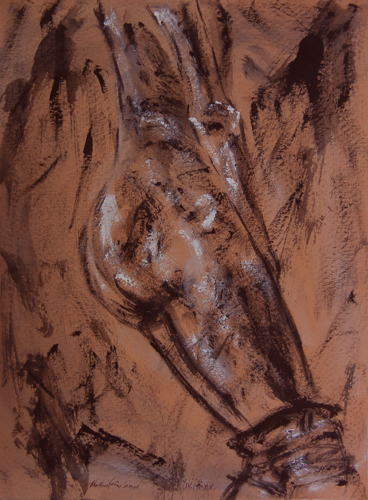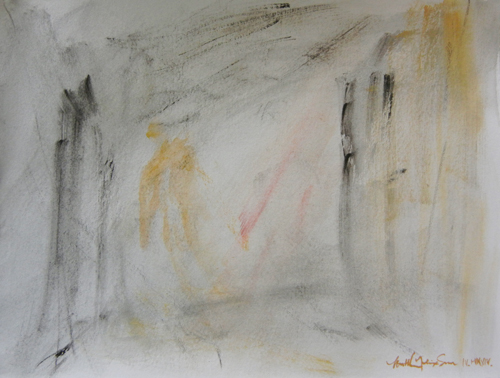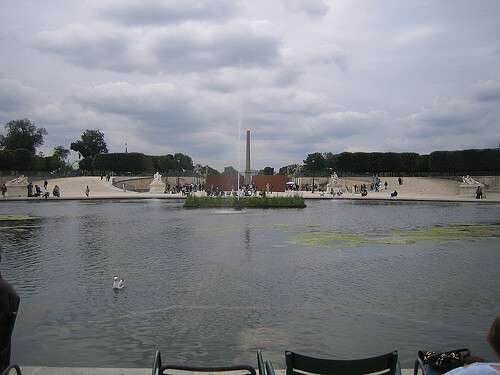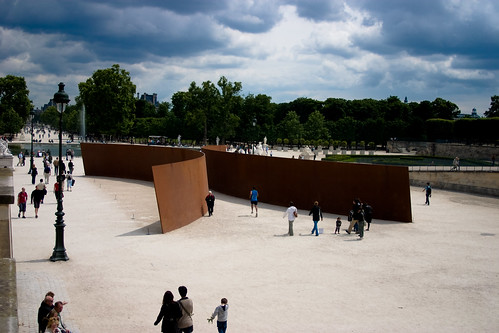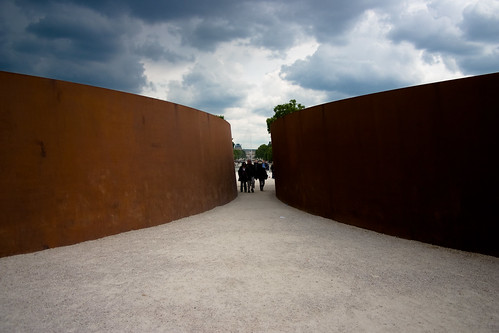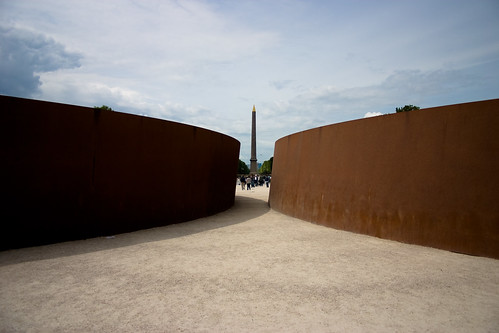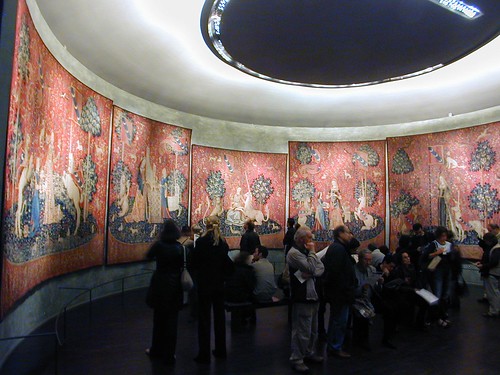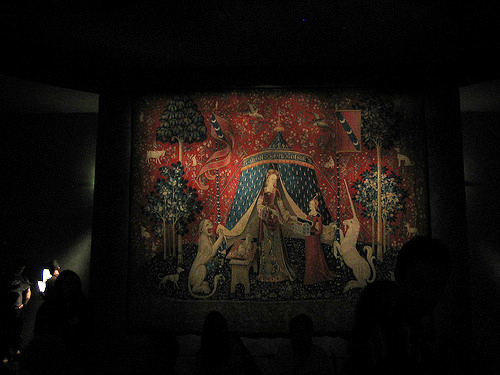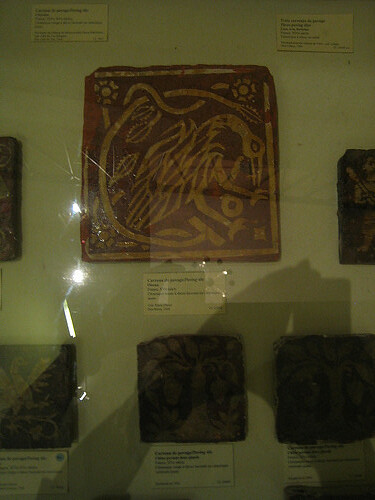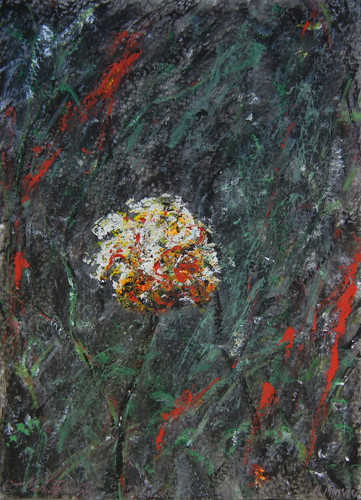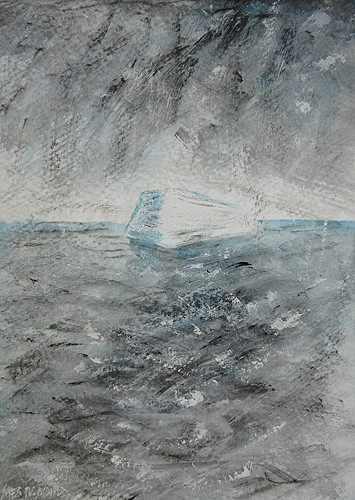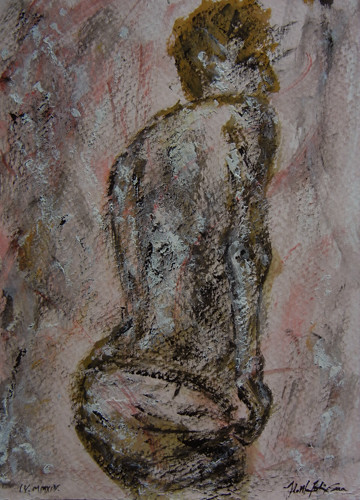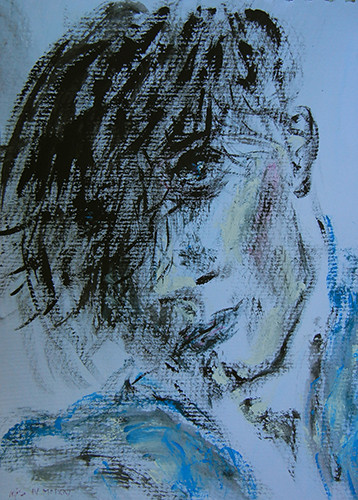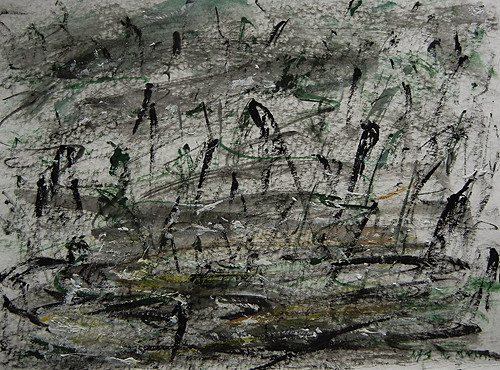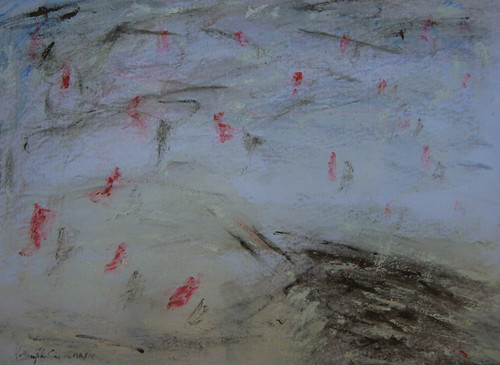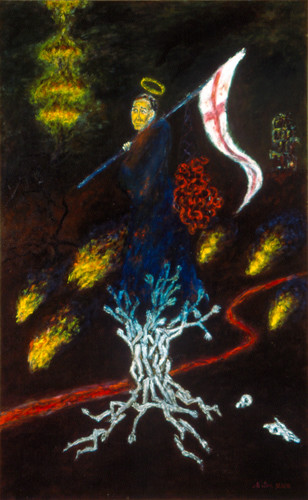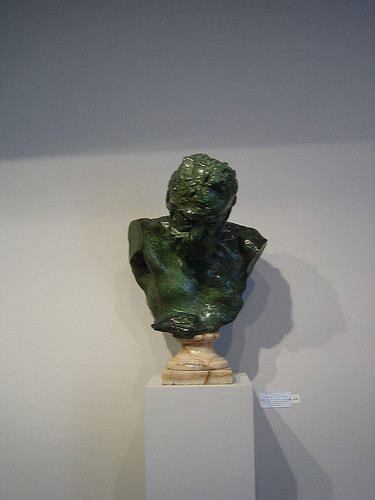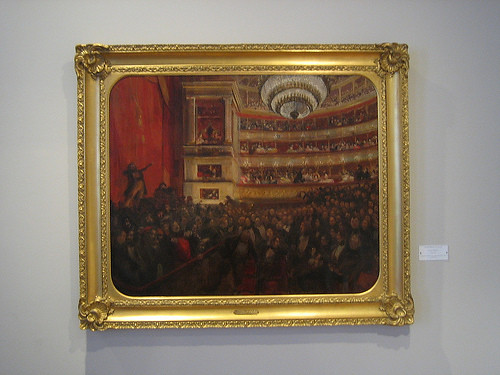Musée National Eugène Delacroix (Musée Delacroix) in Paris is a modest museum which though contains works from nearly every phase of Delacroix’s career, covering many of his themes, along with some of his memorabilia.
According to the museum, "
Magdalene in the Desert, exhibited at the 1845 Salon and one of the museum’s major paintings, is a most unusual religious composition, as compared to
Education of the Virgin, painted in Nohant in 1842. The museum also boasts the artist’s only three attempts at fresco, which were done in Valmont (1834)."
These paintings, sketches and other works were intimate and quite personal, comparing to his more monumental works often encountered in more exalted institutions, such as
Musée du Louvre. Incidentally, one of my two favorite artworks in Musée Delacroix was a preparation work for his gigantic
La Mort de Sardanapale (Death of Sardanapalus), collected by Louvre.
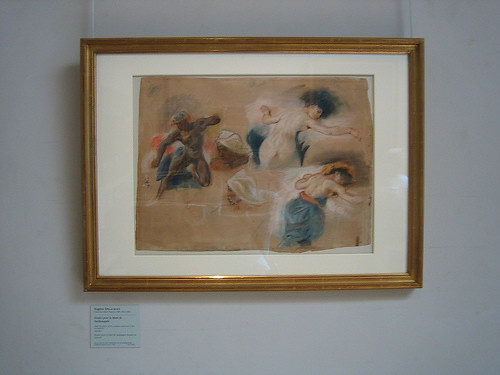
Though concentrating on a small slice of the huge final composition, this study conveyed the same strange mix of terror and abandon. With its exceptionally delicate coloration, its figures looking like exotic birds in strange poses, this study was eerily beautiful and even evoked the calm world of Albrecht Dürer's meticulous watercolor still life. Being a romanticist, Delacroix's work though was naturally more sweeping in execution; being a study, it also carried impressionistic traits.
My second favorite work there was another study for another historical moment -
Study for Mirabeau Confronts the Marquis de Dreux-Brézé, during the French Revolution, over the procedure therefore substance of the congress of three estates.
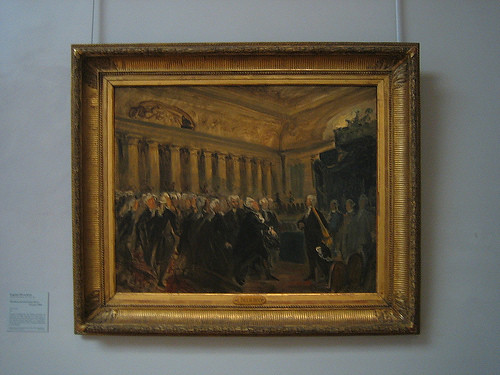
This study was both energetic and economic. The eloquence of the painting lay in the restrained bod languages of the grandees, whose multiplying dark frocks and gray wigs foreshadowed the mob scenes soon to come, and the gilded panels and roof of the interior clashed violently with the somber and unsmiling figures of the confronting parties. Despite being a sketch, it was a masterpiece, similar to many very revealing and satisfying study sketches by Pieter Paul Rubens.
The final composition of this work is in the Ny Carlsberg Glyptotek in Copenhagen. One day I'd love to see it there, and to see whether it would be one of my two favorites there or not.
List of My Favorite Artworks in the Museums I've Visited
Other Related posts on
Art · 文化 · Kunst:
-
My Favorite Paintings at Musée Marmottan Monet
-
My Favorite Sculptures at Musée Rodin, Paris
-
Revisiting Norton Simon Museum in Pasadena
-
My Favorite Paintings from Musée Picasso, Paris
-
The Museum of Modern Art, New York City
-
My Favorite Sculptures at Cimetière du Père-Lachaise, Paris
-
My Favorite Paintings in the Courtauld Gallery at Somerset House, London
-
My Favorite Paintings in Cathedral of Our Lady, Antwerp (Antwerpen), Belgium
